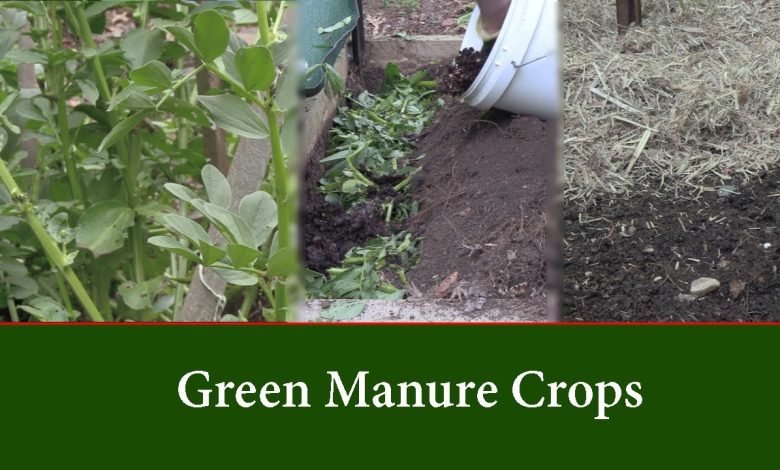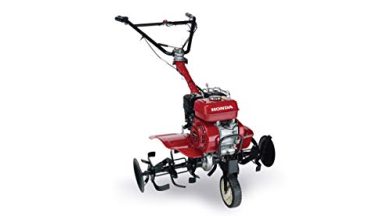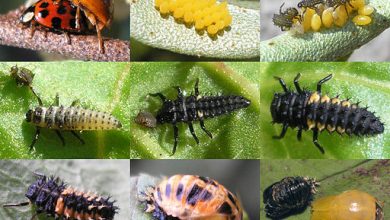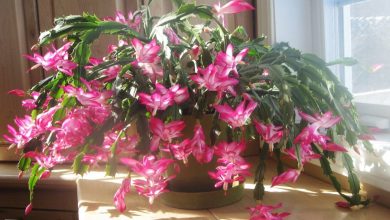Green manure for the organic garden: What it is and how to make it

Today we will talk about one of the most used ecological fertilizers in organic gardens: green manure. What is green manure and what is it used for? What are the types of green manure that can be used in the garden? Let’s see it!

Fertilizing or fertilizing the soil is essential so that the plants we grow have abundant and quality nutrients. In organic farming, the basis of fertilization is organic fertilizers such as manure, compost and vermicompost or green manures.
What is green manure and what is it used for?
Green manures or cover crops are plants of different types that are cultivated to be cut and incorporated (in green) into the same soil where they have grown.
The main objective of green manures is to increase the content of organic matter and nutrients in the soil, but their use also seeks to improve its structure, increase beneficial microbial activity and protect the soil surface during periods when it is not cultivated.
In addition to a more fertile and «living» soil, if you decide to fertilize with green manures, there are many benefits that you will obtain from them.
Advantages of using green manures
- weed control
- They avoid the washing of nutrients because the presence of the roots prevents them from being lost downwards.
- In the case of green manures from legumes, they enrich the soil in Nitrogen
- The structure of the soil is improved thanks to the penetration of its roots
- Improve air and water circulation
- They favor the nutrition of the plants that will be grown later in that same soil
- Many green manures have flowers that attract pollinating insects.
- They maintain the temperature and humidity of the substrate.
How to make green manure step by step
- Repair the land by removing stones and weeds
- Sow green manure: spread the seeds over the ground as evenly as possible. (If they are very large, make small furrows and plant them in rows).
- Once the seeds germinate, let them grow until just before flowering (if the seeds flower and develop, they can become weeds).
- Mow and, if possible and convenient, chop.
- Bury to a depth of about 10-20 cm with a plow or manually with a shovel and hoe. A first superficial incorporation (5-10 cm) can be done, followed by a deeper incorporation a week later.
- Three or four weeks later, the garden crops can be sown or transplanted.
Types of green manure for the garden
There are many herbaceous plants that can be used as green manure, below we describe the most used:
1. Legumes used as green manure
Nodules are formed in the roots of legumes where soil nitrifying bacteria (mainly of the Rhizobium genus) take Nitrogen from the air and are capable of transforming it and incorporating it into the substrate (biological Nitrogen Fixation).
The cultivation of legumes as green manure is very interesting, don’t you think?Not only do they incorporate organic matter into the soil that can later be transformed into nutrients, they also directly provide nitrogen that can be assimilated by plants, one of the most important nutrients for their development.
The main legumes for green manures are:
- Clover (Trifolium pratense, T. hybridum, T. incarnatum…)
- Green peas
- Beans, beans…
- Alfalfa (Medicago sativa and Medicago lupulina)
- Vetch (Vicia spp)
- Wild lupine (Lupinus angustifolius)
- Fenugreek or albolga (Trigonella foenumgraecum)
Compared to other types of plants, legumes have the advantage that they make an extra supply of Nitrogen, but they are «worse» in terms of the amount of organic matter they contribute to the soil (they contribute less) and their growth (they grow slowly in autumn and some resist winter poorly) so it would be interesting to combine several green manures to compensate for the benefits and drawbacks of each of them.
2. Cruciferous
They are rustic plants that can be grown with little effort and in difficult conditions (they have few requirements). They are capable of growing fast even in poor soils and easily mobilize soil nutrients, providing more organic matter than legumes, although they develop well together with them.
The most important cruciferous plants used as green manures are:
- Mustard
- fodder turnip
- Rape
- Cabbage
- Radish

Source: Fertilization Technical Manual, SEAE 2008
3. Grasses or cereals
Grasses produce more green matter for burial than legumes (more organic matter for the soil) and, once buried, the residues decompose more slowly.
In addition, the roots of these plants improve the substrate because they hollow out and soften the soil. Sowing grasses and legumes together as green manure is very beneficial because they enrich the soil and form a more stable humus.
Grasses or cereals that are used as green manure:
- Rye
- Oatmeal
- Buckwheat (Fagopyrum esculentum)
- Ray-grass
Which green manure to choose
In the first place, you must bear in mind that not all crops are the same: the growth speed is not the same, some are more resistant than others to the cold of winter… It depends on when you plant the green manure, you must opt for some species or others.. And remember that it is also interesting to combine legumes with other types of green manures!
- Crops for winter green manure: they withstand frost and are very suitable for long periods of time in which the soil would remain bare without cultivating, because they protect it from erosion and prevent weeds from proliferating. Some of them are: alfalfa, meadow clover (Trifolium pratense) and hybrid clover (T.hybridum), vetch, rye, oats and forage turnip.
- Summer green manure crops: they need to be fast growing because they need to be incorporated into the soil as soon as possible, as summer crops will be planted soon after. Most of them are only capable of withstanding mild winters, at most. Some are: wild lupine, incarnate clover (T.incarnatum), buckwheat or albolga.
Another option is to grow green manure intercropped with our crops and incorporate it into the soil when harvest time arrives. In this case you have to be careful so that it does not compete with the crop: sow when it is already somewhat grown and use plants that are not too invasive such as clover).
In the post 3 Types of green manures for the orchard and fruit trees we saw more examples on how to fertilize with green manures.
References
- Gonzálvez, V. & Pomares, F., 2008. Technical Manual: Fertilization and nutrient balance in agroecological systems. SEAE (Spanish Society of Ecological Agriculture).
- López Garrido, R., 2010. Conservation tillage: short- and long-term effects on soil quality and crop development. Doctoral Thesis. University of Seville (Spain).
- Guanche García, A., 2012. Green manures. Technical Information. AgroCabildo. Technical Service for Agriculture and Rural Development (Cabildo de Tenerife, Spain).
- Prager Mósquera, M. et al., 2012. Green manures: Technology for the agroecological management of crops. Agroecology, vol. 7 (1), p. 53-62.

![Photo of Prune Orange and Lemon Trees: [Importance, Time, Tools, Considerations and Steps]](https://www.complete-gardening.com/wp-content/uploads/2022/08/prune-orange-and-lemon-trees-importance-time-tools-considerations-and-steps-390x220.jpg)


